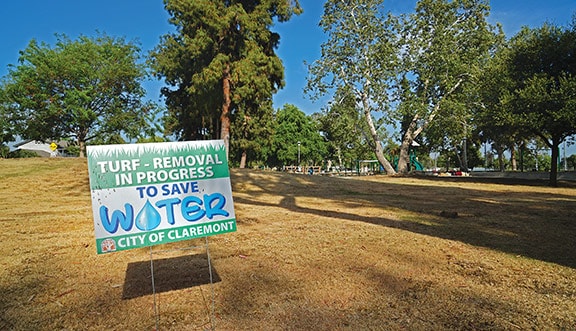Claremont continues efforts toward sustainability

Claremont continues to pave the way toward a greener, sustainable future, announcing a new partnership between the city and a program run by the United States Green Building Council (USGBC).
On April 28, the USGBC—founders of the Leadership in Energy and Environmental Design (LEED) green rating system—named Claremont one of 15 cities selected for the 2021 LEED for Cities Local Government Leadership Program. According to the news release, the chosen cities have local governments dedicated to addressing climate change and other issues negatively impacting the environment.
Community Services Director Jeremy Swan said with help from Sustainable Claremont and the group’s Executive Director Stuart Wood, the city was able to connect with a USGBC site president and submit a LEED for Cities application in March.
Although the 2021 program is still in its infancy, Mr. Swan said he is honored the USGBC selected Claremont to be a participant.
“That’s what we’re trying to do as time goes on…become more and more sustainable, and always have sustainability at our forefront as we try to make decisions,” Mr. Swan said. “It’s an honor for the city to be able to show our sustainability efforts and work with the other[s in the] national cohort.”
The program would allow Claremont to engage with other LEED for Cities participants to improve or learn about new beneficial and sustainable actions they can implement. Long Beach was the only other city in California to be selected for the program, according to the news release.
Mr. Swan said it would likely take 12 months to work through LEED certification, which will determine Claremont’s sustainability score and certification level.
“There’s a scorecard that will follow and that will determine our certification level. We have to follow the scorecard and receive so many points based on the different elements of that scorecard,” he said. He also confirmed that the scope of the sustainability projects would impact the score as well.
“What [the program] is going to do is…be a scorecard for the city to use to work with other cities that have very similar sustainability goals to see where Claremont truly is versus other cities in a similar category,” Mr. Swan elaborated. “Instead of using just what we think is good, [Claremont is now] looking from a national cohort level to show how sustainable we really are.”
Though the process just began to take shape for the city, Mr. Swan said many private businesses in town have already undergone LEED certification, including some Pomona College buildings.
While LEED will no doubt help Claremont achieve a cleaner infrastructure, the program is also a tremendous boost toward the city’s ongoing eco-friendly efforts—one of the most notable being the ever-evolving Sustainable City Plan (SCP), overseen and managed by the sustainability committee.
Described as a living document by Mr. Swan, the SCP will help to build a more sustainable Claremont in the future by addressing seven goal areas including resource conservation, environmental public health, transportation, sustainable developments, increased biodiversity, green housing and public awareness.
At that April 13 city council meeting, Mr. Swan and the sustainability committee explained that the updated plan has addressed various SCP goals since 2019.
Mr. Swan explained that with the help of the plan, the committee was also able to complete the Foothill Boulevard Rehabilitation Project, acquire 483 acres of open space in the Claremont Hills Wilderness Park and Evey Canyon, implement drought and water wise education, and install a cooling roof at city hall, among other projects. A cooling roof reflects sunlight and absorbs heat, making it more efficient than conventional roofing.
He also said the committee was able to convert the city’s parking enforcement vehicles to electrical and switch Claremont’s sanitation vehicles from diesel to compressed natural gas (CNG).
“The actions are what we could actually work toward. The goals are too, but the actions are what we could actually work toward achieving,” Mr. Swan said, adding that those within city responsibility are doable.
However, only a few actions have financial backing, such as the $5.8 million Trane program, according to Mr. Swan. He said some projects have had to be placed on hold by the sustainability committee because they do not have the funding right now.
Though the committee’s living plan has made several accomplishments over the last year, the plan also noted some shortcomings. In terms of renewable energy levels, the plan read: “Roughly 89 percent of Claremont’s total energy consumption in 2018 came from non-renewable sources,” and that just “11 percent was derived from renewable sources (solar, wind, geothermal, etc.).”
As the sustainability committee and upcoming LEED for Cities Program look to guide Claremont into a greener future, residents can expect Mr. Swan and other sustainability advocates to be out there working, providing education materials, and helping the community carry out sustainability efforts.
“I think the biggest point to LEEDs is that we’re very early in the LEED process and additional information will be shared through our sustainability committee,” Mr. Swan said. “They’re two different elements that ultimately—once all said and done—we’ll tie together.”
Mr. Swan encourages residents with questions regarding the city’s sustainability efforts or the LEEDs for Cities program to call the Community Services Department at 909-399-5431.
by Andrew Alonzo | aalonzo@claremont-courier.com









0 Comments